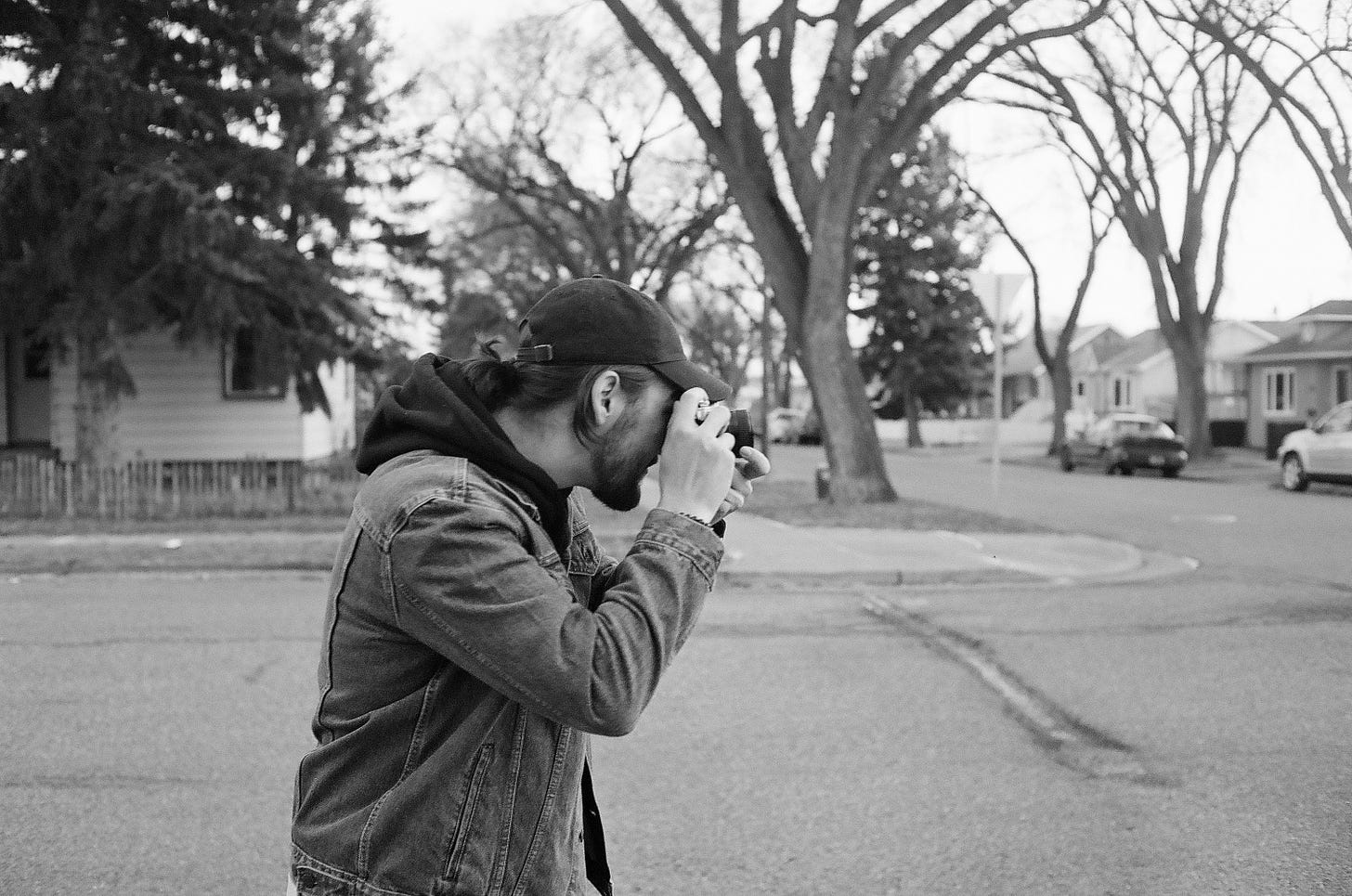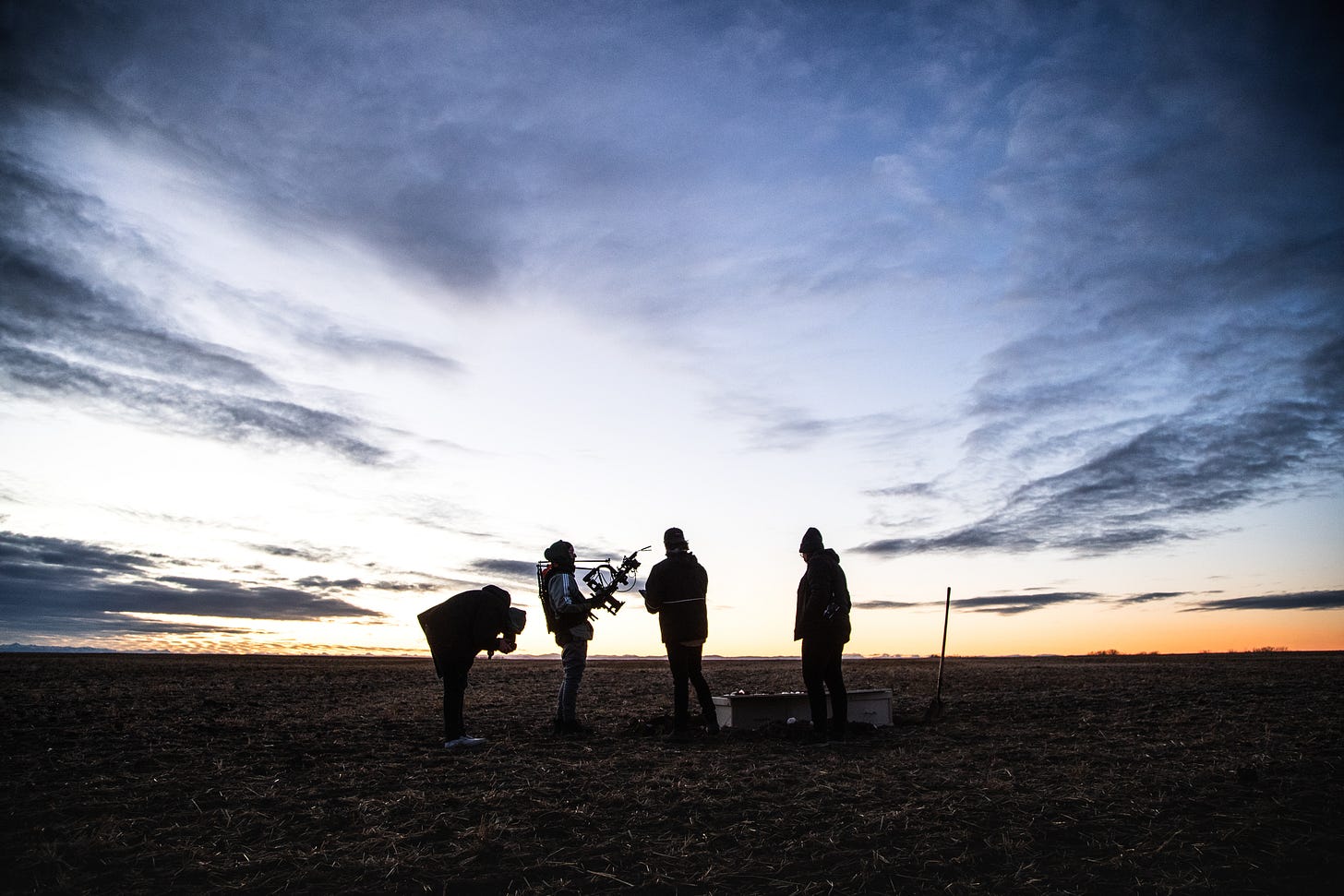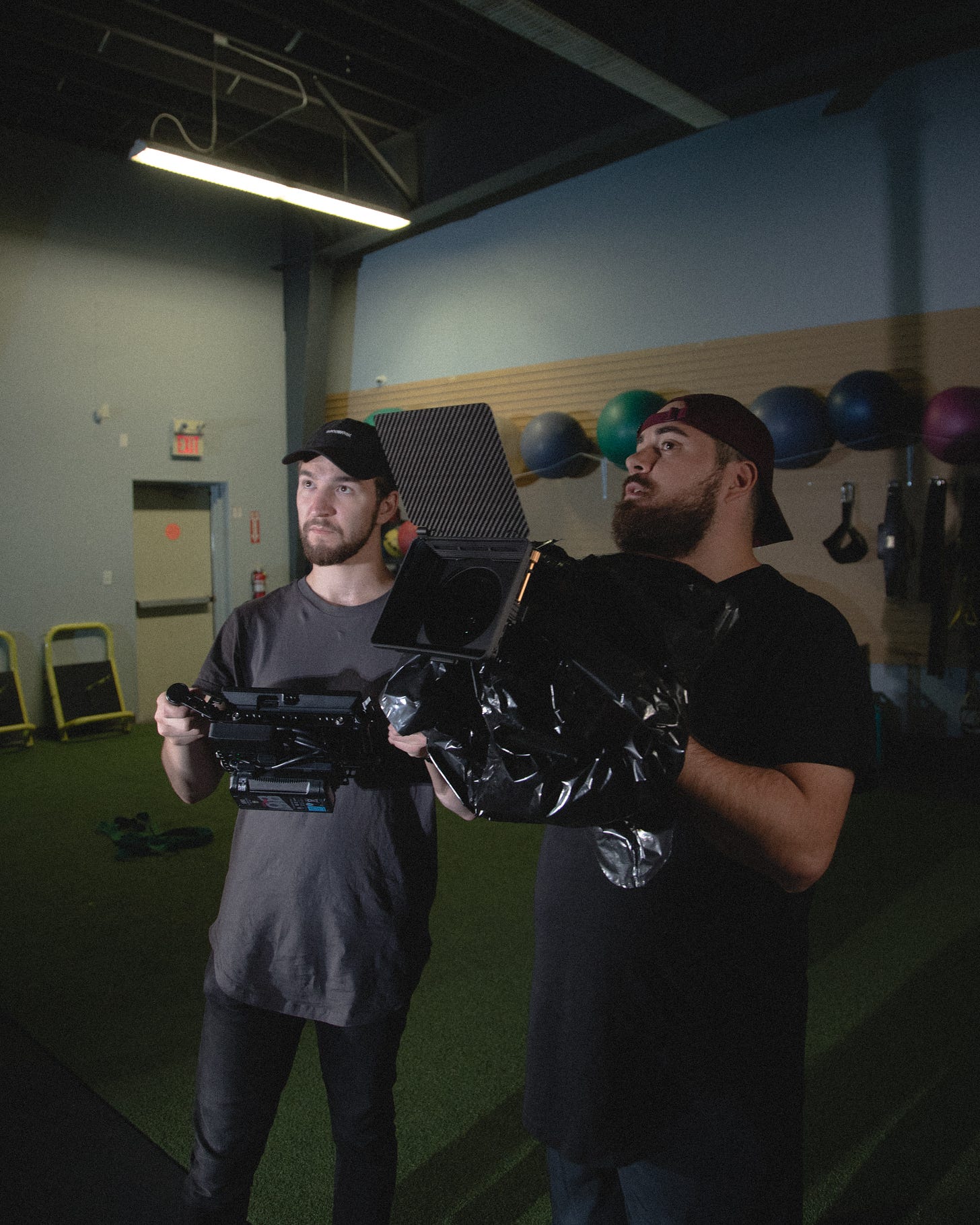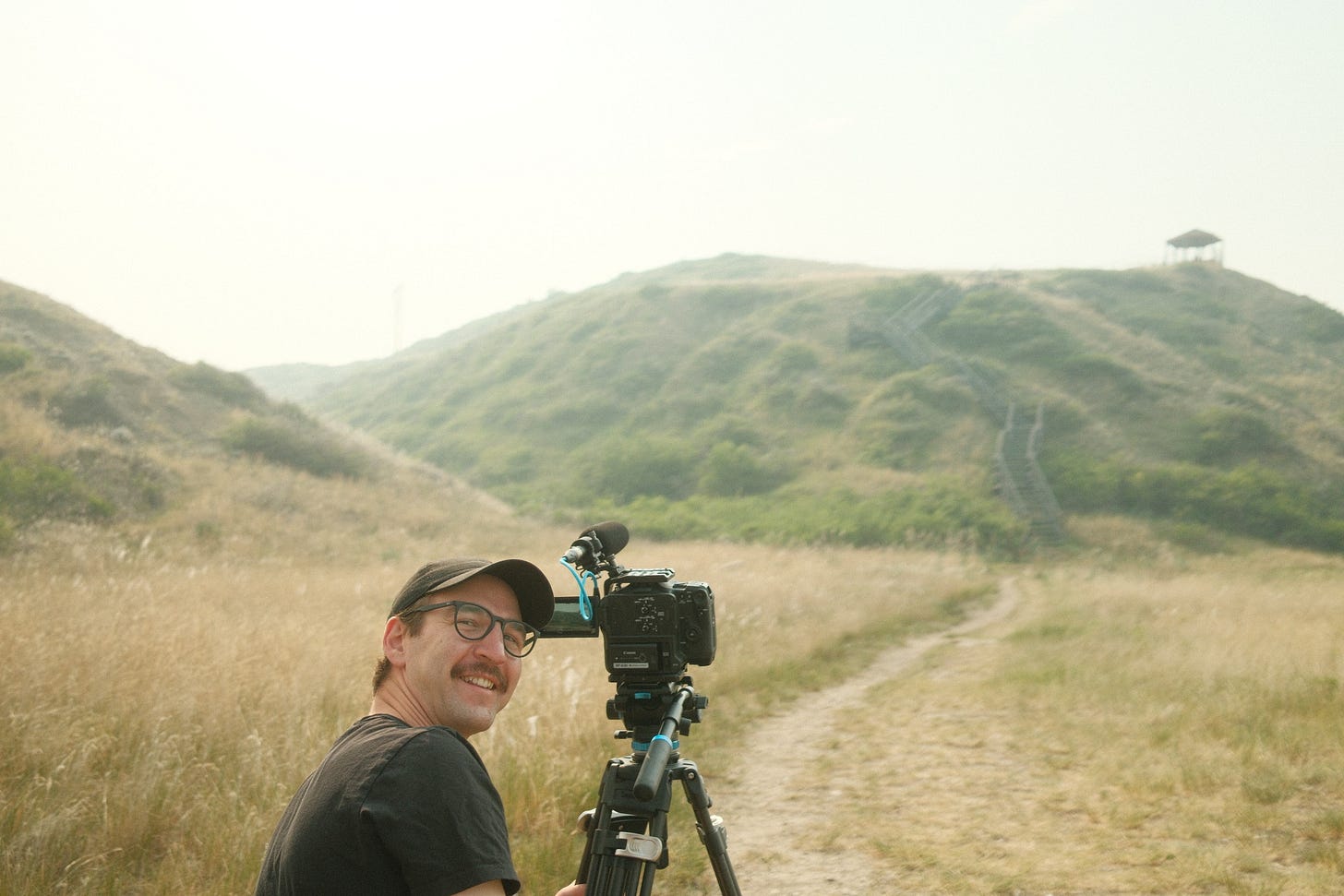Light from Light: A Hermeneutic to Seeing
“The relation between what we see and what we know is never settled. Each evening we see the sun set. We know that the Earth is turning away from it. Yet the knowledge, the explanation, never quite fits the sight.”
—John Berger, Ways of Seeing
Light from Light is more than poetry. It is a hermeneutic towards a way of seeing the world as mystery made manifest, where beauty, by grace, reaches beyond finite form and yet is somehow revealed within it. Beauty transcends any explanation we can assign to it, because by a mysterious grace, it reaches out towards and is born out of something far beyond the finite expressions that make it known. Yet, it is somehow in the very expressions themselves that make it known to us. It is, in a sense, incarnate.
If we can say anything about beauty, it is, first and foremost, experiential. The phrase "Light from Light," taken from the Nicene Creed of 325 AD—a universal Christian confession—strikes me as a lens through which to view all of reality. Not as empty rhetoric, but as a way of seeing. Admittedly, this has become known to me in light of the revelation of Jesus, the Christ, the God-Man, the Incarnate Son of God. The fact that we can believe God manifested himself as intimate and material is, firstly, because we believe that the world itself is capable of this and is, by nature, sacramental. That it is, in the poet Gerard Manley Hopkins’ words, “charged with the grandeur of God.”
“We never look at just one thing; we are always looking at the relation between things and ourselves.”
—John Berger, Ways of Seeing
For years, I have been drawn to the image—not just works of art or digital photographs, but the very fabric of the visible world. By image, I mean the world right before our eyes—not only art galleries or curated feeds, but the fleeting, unspectacular moments that often go unnoticed.
Saint John of Damascus once said, “The whole world is an icon of the face of God”, and the very way we encounter it, whether we realize it or not, shapes us. Though I speak from a religious conviction, please, as best as you can, do not interpret it or hear it as a dogmatic imposition. I do not intend to force a filter over your eyes, but mean only to share a lens, which I am convinced is simply the experience of being human, with all of the diversity that this entails.
I must admit that I have not always thought of aesthetics so deeply. I did not think such language existed or that these topics of study were serious discussions already being had—and not just in the stale classrooms of much of modern academia—but by artists, poets, and creators like you and me—wandering pilgrims on the face of the earth.
As is natural, I believe, for any early artist at the beginning of their career—and which is likely an ongoing tension for the remainder of their life—I was obsessed with the technicalities of the mediums I was pursuing. I was consumed with becoming, rather artificially, an artist rather than being one. As we become so obsessive over the canvas in front of us; whether it be a computer screen, camera, paint canvas, or whichever instrument it may be for you—the more we scrupulosly try to grasp by our might and own accord, what I want on the canvas, what I want someone to walk away feeling, thinking, or believing, the less we make true art and the further away we get from accomplishing exactly what our heart initially intended.
I believe it is valuable, daily perhaps, for any artist—for any human being that is—to close their eyes, enter into silence, and listen to the simplicity of life around them. To take in for its own sake the orchestra of the birds singing, the trees whispering, and the sun glowing silently on the meadow. To become aware and attentive to the great orchestra that is the voice of the earth around them—the song that sings of praise to the God who made them all and of whom they all speak. To take in the face of the world, of creation, of our fellow man, and to find within it all, the Face beyond all faces. In returning to this simplicity—not to get, but to be—we rediscover who we are. In this simplicity of prayer, a listening more than a speaking, a surrender more than a grasping, a being rather than a going, we somehow begin to awaken to who we are.
“A man knows when he has found his vocation when he stops thinking about how to live and begins to live.”
— Thomas Merton
Over the course of my career, I have gone from beginning a career in photography and filmmaking—starting in a small corporate marketing agency, opening my own production company where I had the opportunity to work on bigger projects—the sort that I had obsessively sought to work on and was consumed by—all to eventually leave my career altogether to enter the simple life as a Franciscan Brother in a monastery. What convinced me to pursue such a road? Only God knows. I cannot say it was logical. It was something I had never previously thought of doing with my life, nor did I think of it as a purposeful or meaningful way of life—quite the opposite. Nevertheless, as I walked the road further, leading to my formal entrance into the monastery, I came to see the beauty in the seemingly ordinary moments of life and realized just how much beauty I had missed in my life thus far.
Nearly half a year after I formally entered and after about two years of formal discernment, I left the life in the monastery to come home and find once again, a camera in my hand. In truth, I never really left it behind, try as I did. The reality is that I was constantly encouraged by my Franciscan brothers to bring a camera with me and use it. So with what few possessions I packed with me, I made sure to bring one lens and a camera. The purging that took place during these years of using a camera for nothing more than the fact that it brought me peace was, in a way, a form of prayer and a means for my own contemplation of God and the world. It led me to an experience of what felt like scales falling from my eyes. The more I photographed the ordinary—strangers waiting at intersections, steam rising from coffee—the more I saw: the world wasn’t waiting to become beautiful. It already was, and I began to see the enchantment and holiness of my day-to-day, ordinary life as well.
In contrast to those earlier years, where I seemed to be constantly grasping at images, trying to make people feel a certain way, formulating images to coerce viewers, leaving myself more drained, empty, and lifeless than I was before, I now found myself full of life. Seeing how much I, in being caught up in the whirlwind of cares that the world arbitrarily throws on us, had missed so much of the beauty right before my eyes, I now began to see the beauty in the face of every person and the depths in all of the lines of their hands and faces. I wasn’t floating down the street, divinized like the saints—but I began to understand them. Holiness wasn’t distant or grandiose. It was as ordinary as my neighbors, as present as my own breath. Yet now, even those elaborate stories of the saints somehow made more sense to me. The realization that holiness, the sacredness of life, could be something so mundane, right before my eyes, was something I had never previously thought possible. Yet here I was, walking down the street with my camera, rencounced to all private ownership of property, income, and self-made success, now happier, at peace, and with an acknowledgement that perhaps even those hard to believe stories were in fact still as ordinary as mine—and not only mine, but as ordinary as the people whom I walked down the street with, as members of the human race.
Each person’s story has within it a universal story that I found myself a part of. My life was no longer just my story but a small part of the story. There is something incarnate and mysterious about reality that I found and still find myself being drawn into. It is something that goes beyond words, and it is why I think the art of the image has always struck a chord with me. Somehow, my simple and superficial love for images and telling stories through them was given a new meaning. What was once an obsession, rather superficially, with aesthetics, turned into a realization that aesthetics was actually a language and was one spoken through silence.
What an alarmingly simple realization it was for me when I came to see that depicting transcendence, that seeing through a spiritual lens, was not about other worldly or phantasmic imagery, but rather about seeing the world that is right before our eyes: people who are right in front of us, nature, and the seemingly mundane moments that we often rush by without so much as a thought towards the most clear, evident beauty that shines in and through it all.
Christ came in and lived in the ordinary world. He did not try or seek to escape it, but descended to us in it all. In this way, reality shines brighter, it is seen more fully, the veil is pulled back, and we see things as they are. It is not unlike those wisemen who followed the stars in the night sky, all the way until their gaze was suddenly turned from the sky above to the soil beneath their feet, where lay the Christ child, the one they had always sought but had now suddenly found in the most unseemly of places. Beauty itself was found right at their feet. We do not look past the world but look at it and realize that it is the same world in which God revealed himself in the most intimate and incarnate way, and it is by that lens that we are called to see the entirety of life. That nature and supernature are not two ruptured realities, but that they are sacramental. They live together and the two are made one.
As the years have gone on, I still find myself in an ongoing tension. It is a healthy tension, I think. One that makes me discern not only how I feel called to use this gift and love of photography, or more broadly speaking, the image, but also to discern why I feel compelled and gripped by the image and the call to tell stories through them. It is a tension that makes me think of and live with an awareness of our human capacity to not only see but to know. Our capacity to see things is not just to see things individually, but ultimately, I have come to believe, to contemplate God in and through all of these things, together. To encounter the Eternal Image in them, which is what makes them so truly beautiful.
These are not just ideas, but concrete realities. In the phrase, light from light, I do not mean to tell you what to see. I do not even wish to teach you how to see. I wish for each of you to see as you do in your unique humanity. I intend to give you a hermeneutic to see. Far from it being a clear path forward, it is one you must traverse yourself, to open your eyes to what is in front of you. I simply want to see with you and to experience the world with you. I believe quite clearly that all we need to do is open our eyes and listen—something so ordinary and natural to our humanity, but which we often complicate. Poetically, we read in the opening chapters of Genesis, God’s spoken word, “Let there be light”, and with that it was so. We are light from Light. Within all light, there is Light beyond it, from which it is born out of and given existence in. This light is something that not even darkness swallows, for even in the darkness, there is that Light. “In him was life, and the life was the light of all people. The light shines in the darkness, and the darkness did not overcome it.”, writes Saint John in the opening chapter of his gospel. Moreover, even Christ himself tells us, “You are the light of the world”.
When we step back and simply look and listen, we see the most obvious revelations right before us. And when in other moments we try to grasp and explain it, we seem to silence it and become blind to it. When we step back, see, and listen, we are spoken to silently and are formed by the phenomenon of ordinary life, whether we realize it or not. In the stillness of an image, in whatever form it comes, there is a Light beyond light, and we would do well, more often, to open our eyes and see. In the words of Thomas Merton: “Life is this simple: we are living in a world that is absolutely transparent and God is shining through it all the time. This is not just a nice story or a fable, it is true.”
An artist spends their life to share light from Light, which they carry, as members of creation, as members of humanity. All art, at its core, is a sharing in the sacramental reality of God and the world—a sharing in the very phrase, “let there be light”.











